By Tom McHale
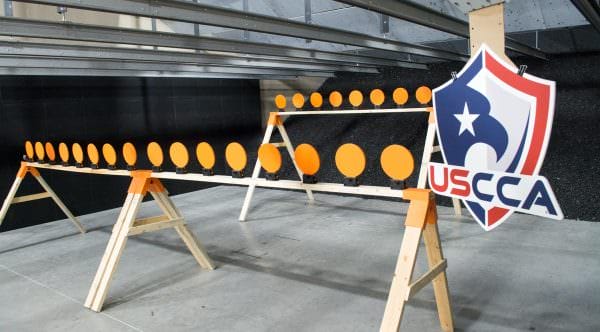

USA –-(Ammoland.com)- One of the benefits of this adventure job is that you get to try out all sorts of new shooting sports gear.
As I write this, I’m in Appleton, Wisconsin eating some fine cheeses and wondering how the Packers are gonna fare this year.
In between servings, I had the opportunity to do a bunch of shooting with the folks from the United States Concealed Carry Association; they’re headquartered up near here. Always on a mission to advance the cause of lawful self-defense, they brought our media crew together with some carefully chosen shooting industry vendors.
The idea was to get some quality range time in for multiple target engagement scenarios and kick the tires of some new gear in the process. Allow me to share a bit more about that.
Indoor Steel
Maybe I’ve been living under a worn out steel popper target, but I didn’t know about Newbold Polymer Targets. Self-healing targets aren’t new, and you can even find them at your local big box store. What is new is the concept of plastic “steel plates.” Shooting steel plates is fun. They fall over when you hit them, so you don’t need to squint at paper targets down range to see if your shot was successful. On the not so fun side, lugging them around causes hernias and probably bunions because they’re, ummm, really heavy.
I don’t know about you, but I have enough unplanned workouts in my life.
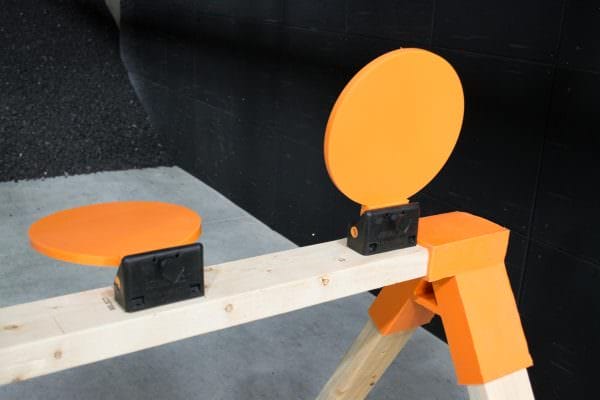
That’s where the Newbold KD-Pivot targets shine. While they have a million designs of lightweight (7x lighter than steel) targets, the ones I got to play with were plate rack setups. The six-inch “plates” I used are designed to allow the bullet to pass through, but they also fall down when you shoot them with pistol rounds. You can certainly shoot them with rifles too, but they may or may not fall down as the higher velocity rounds tend to zip right through. Feel free to try with your rifle caliber – there’s no harm in it.
The “plates” mount on brackets made of the same self-healing material. In fact, you adjust the fall sensitivity using bolts made of the same self-healing polymer. Any part of the system down range allows bullets to pass through without damage.
In fact, after a day of high-volume shooting, we found a couple of target mounts where 9mm bullets hit the balance bolts square on the head. The damage? Nothing. On one bolt, the bullet went right into the center of the head, passed down the length of the bolt, and zipped out the bottom with no damage at all to the threads. Keep in mind that the whole bolt is about the same diameter as a 9mm bullet. That’s pretty cool.
If you want to set up a plate rack, just get some 2×4 segments and stick the ends into the new Alpha brackets. Those should be available right about the time you read this. Yep, you guessed it, those are self-healing too. There’s also a new “T” stand setup on the way if you just want to set up single targets.
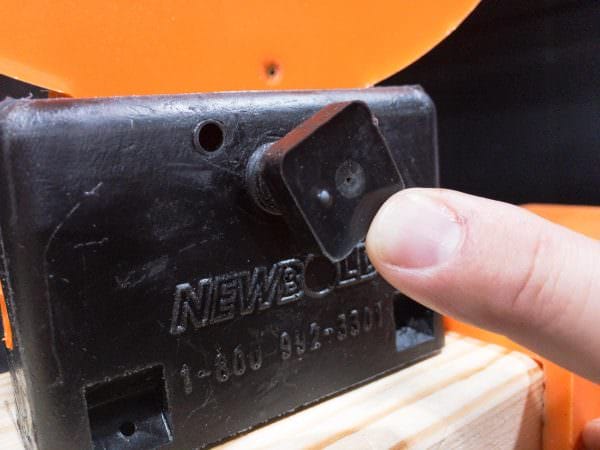
There’s one more significant advantage over steel. You can shoot them at any distance, including point-blank range. Since the bullets pass through just as they would with a cardboard target, there’s no fragmentation or splash as there is with steel targets. I’m anxious to set up a plate rack at my home range to practice speed shooting at short range.
There are too many varieties to talk about all of them here, so check out the company’s web site. While the KD-Pivot “plates” shown here need to be reset after they fall, you can use the same targets in a hanging scenario, so they move when you hit them then resettle back into place.
Eyes getting fuzzy?
As an aging shooter, I’m plagued with presbyopia, you know, the irrational fear of receiving gifts. Actually, it’s a slight hardening of the lens over time that makes it harder to focus on things like obnoxious Facebook posts and handgun front sights. As a result, I wear glasses these days, but most of the correction is for close up stuff. Finding a solution for shooting glasses has always been a pain – until now. The folks at SSP Eyewear wanted to find a way to make affordable eye protection that solves the shooting problem for those of us who need reading glasses. If you need a little help seeing things up close, most glasses, whether prescription or drug store readers have the close-up correction at the bottom of the lens. That’s great for reading, but when you shoot handguns, you tend to tilt your head forward, so your eyes are looking through the tops of the lenses. That’s where the SSP Eyewear’s Top Focal Lenses solution shines.
The correction zone in the lens is ground into the top area, right where it needs to be to provide perfect focus on the sights when in a shooting stance.
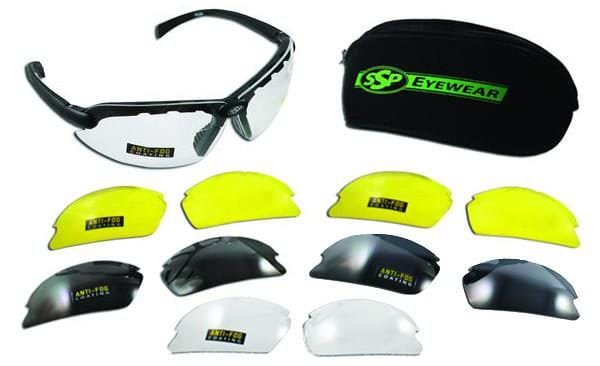
Going on a wild guess, I requested the 2.0 correction on my set that was shipped to the event. As advertised, they made my vision at front sight distance amazingly crisp and clear when I leaned my head forward into my natural shooting position, but the targets in the distance were a little blurrier than I would have preferred. Then, when I got home, I actually read the instructions. Guess what? Since the lenses are instantly swappable, you can put a top of lens correction in your dominant eye and a bottom correction lens in the other one. That turned out to be the bomb. When shooting, your dominant eye focuses on the sight while your support eye sees more clearly down range. When you need to do some up close maintenance work, use the non-dominant eye as a traditional “reader” glasses setup the correction in the lower part of the lens. You can order all sorts of combinations of lenses in different colors, different corrections, and either top or bottom correction placement.
The best part is that all this stuff is in the Amazon delivery options and two digit price range, unlike prescription solutions where prices are big enough to have their own gravitational field.
Walther Creed 9mm Handgun
Walther’s Creed handgun is a budget friendly offering that brings most of the classic Walther ergonomic features into an affordable package. It’s a 16+1 round, full-size handgun that carries an MSRP of just $399 (less $$ online). By simplifying the design, using polymer in creative places to reduce machining costs, and leaving out some extras like replaceable backstraps, they’ve been able to get the price down.
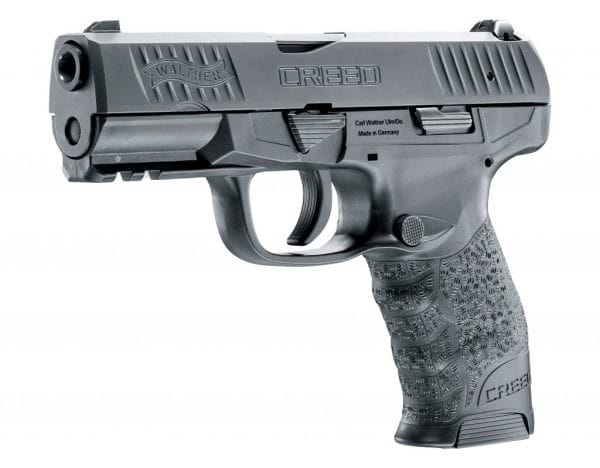
I shot about 200 rounds through it during our polymer palooza escapades with good result. It ran fine, and I had no trouble mastering the trigger on the pre-cocked double-action system. I didn’t have my scale with me, but the company advertises the pull weight at 6.5 pounds. It felt about right to me. During various stages of our bragging rights competition, I shot it two-handed, strong hand only, and weak hand only. I didn’t have any malfunctions unless I can find a way to blame my leaving a plate standing after I cleared my gun and showed clear to the Range Officer. Oops.
The folks at XS Sights provided Big Dots for the guns we used. I’ve always been a fan because the large front sight leaps into view with no visual confusion from similar dots on the rear sight. The rear is a “V” ramp with a white vertical line for more precise alignment.
While my single-day experience wasn’t a full evaluation, I had a good first impression of the pistol as a wallet-friendly alternative. I’ve got one coming in for a full test scenario, so more on that later.
Comp-Tac International Holster
I used a Comp-Tac International holster and Twin Magazine Belt Pouch throughout the event. The International is an all-Kydex OWB model and I really, really like it. The draw was slick, slick, slick right off the bat and the belt attachment was rock solid. Within the belt loops are internal hooks that tension the holster against the bottom surface of the belt. You slip the belt through the oversize loops (that can accommodate larger belt width too), when it’s in just the position you want, you hook the belt over those internal hooks and the holster if firmly anchored in place. It did not budge throughout the day. I’m anxious to try one of these on some of my heavier steel guns that tend to flop other OWB holsters around on the belt. The International comes with three different mounting options: belt loops, paddle, and offset belt loops. It’s also easily adjustable for cant angle.
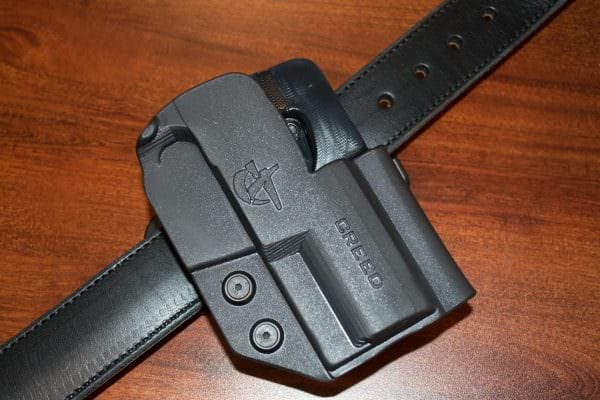
The Twin Magazine Pouch is also outside the waist band but mounts with slip on clips instead of closed belt loops. Each magazine pouch has two separate tension adjustments at the top and bottom so you can customize the magazine “draw.” The thing I liked best about these mag pouches is that they are separated by about an inch. That allowed me to mount the unit so that a belt loop was in between the two mag pouches. That kept the entire thing right where I wanted. Like the holster, it stayed put throughout the day.
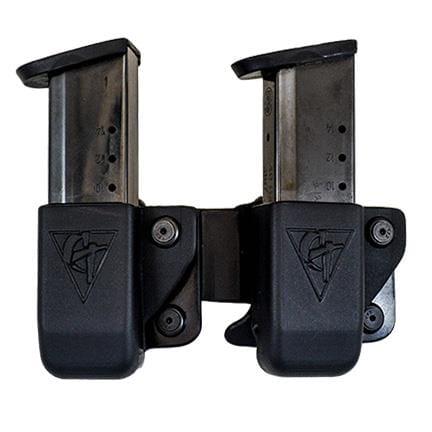
Walker Silencer Internal Hearing Protection
I’ve been using Etymotic Gun-Pro internal electronic hearing plugs for the past couple of years. I love them not only for their great sound reduction features but for the very natural voice sounds that the system allows you to hear while still blocking dangerously loud noises. Last week, one of them died, and since they’re not easily repairable, I’ve been in a deep depression. They cost about $300 a set, which is fair considering how well they perform.
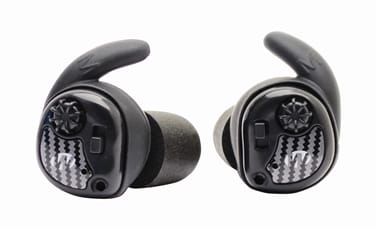
I had the opportunity to try an alternative, Walker’s Silencer internal electronic plugs. Unlike other models, these have a suggested retail of just $229.95, and they’re available on the street for about $165. Additionally, they come with an on/off switch and volume controls. They still use #10 hearing aid batteries which have a limited lifespan once activated, but the switch saves some of that juice for when you need it during the batteries lifespan. They’ll run continuously for about 80 hours, and the hearing aid batteries are dirt cheap.
These come with contoured foam in-ear plugs mounted on rubber outer ear fins. The rubber portion keeps the unit firmly locked in your ear. The set includes small, medium, and large rubber fins. I started with the medium and had a little soreness, so I switched to the small. That turned out to be the perfect fit, and from then on, the units were perfectly comfortable. The plugs did a great job of bringing the extreme loudness of the indoor range to comfortable levels. The Silencers pick up and even amplify safe levels of ambient sound so you can hear what’s going on. I found that voices were a little more subdued than I would like, but I suspect that’s because the Walker gear is probably optimized for the field. Since they pick up all the subtle background noises, they’ll make a great hunting solution. They were fine for range use too, just not quite as “conversation-optimized” as more expensive solutions.
About
Tom McHale is the author of the Insanely Practical Guides book series that guides new and experienced shooters alike in a fun, approachable, and practical way. His books are available in print and eBook format on Amazon. You can also find him on Google+, Facebook, Twitter and Pinterest.



Machinists and home workshop hobbyists with metalworking lathes and milling machines and such, likewise have need for creative safety glasses to suit exactly what they do, and some safety glasses as described in this article can work for either in the workshop or out at the firing range as well. A little online searching will quickly find safety reading glasses that are bifocal – the large roughly 2/3rd’s upper portion of each safety lens is simply clear with no corrective reduction or magnification, so you can see everything the same as you would without glasses, and the lower roughly 1/3″… Read more »
Tom,
THANK YOU for the heads up for the SSP EyeWear as my old eyes are now getting MAJOR near sighted as the front sight fuzzily fades into oblivion. Laser sights are becoming a necessity but for a coming trial with these new spectacles. At least my far distance is still near at an optimum.
As always, I enjoy Your articles with the latest new toys. Keep ‘um coming! DGJ
The plastic plates are interesting as an option. Thanks